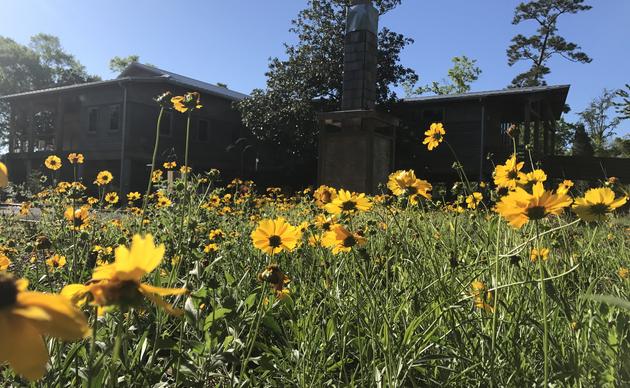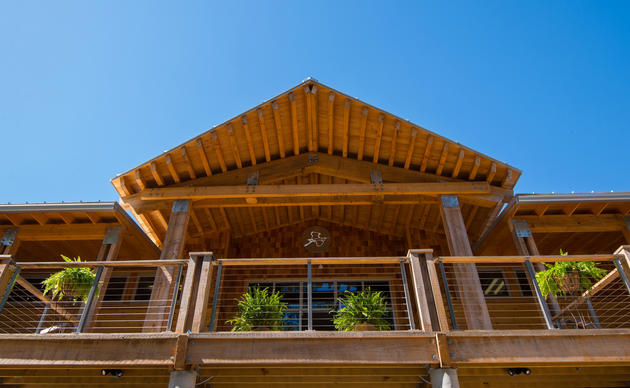The Ides of March, typically associated with the murder of Julius Caesar in 44 BC, has a much more positive connotation along the Gulf Coast: it marks the annual return of the Ruby-throated Hummingbirds. Ruby-throated hummingbirds are a common summer resident at the Pascagoula River Audubon Center and along the Mississippi Coast, and their spring arrival is one anticipated by birders and backyard bird watchers alike.
Suggestions for attracting hummingbirds to your backyard:
1) Hummingbird Feeders
A hummingbird feeder, kept clean and free of mold, can be one of the simplest ways to attract hummingbirds to your yard. The recommended nectar solution is 1 part sugar to 4 parts water. There is no need to add food coloring (or used packaged "hummingbird nectar" mix) as the dyes used in these formulas may be detrimental to the birds. Plain white table sugar is also recommended over brown or raw sugar. Hummingbird nectar does ferment quickly in warm weather, and should be changed fairly frequently. Keep a jar of sugar water mixture in the fridge to slow the fermentation process and only fill feeders half-full so that the birds use as much of it as possible before it needs to be changed. Feeders should be cleaned regularly to remove the mold, mildew, ants, and other pests that can be attracted to the sugar.
2) Planting for Hummingbirds
Hummingbirds are attracted to brightly-colored tube-shaped flowers like our native Trumpet Creeper (Campsis radicans), Cross Vine (Bignonia capreolata), and Coral Honeysuckle (Lonicera sempervirens). Red buckeye (Aesculus pavia) and native azaleas (Rhodendron sp) and other early blooming plants may beckon hummingbirds in the spring, coralbean (Erythrina crista-galli) in the summer, and fall flowering Butterfly Bush (Buddleia davidii) and Blazing stars (Liatris sp.) help fuel them before the big southward migration that takes place in October each year.
Not only do native plants attract hummingbirds and other pollinators to their blooms, they also provide critical habitat to insects- including the moth and butterfly larvae that most songbirds typically depend upon to raise their young. When your hummingbirds disappear from your feeders in June and July, it means that they are most likely nesting and seeking out insects to feed their growing young. They'll return in late summer when the tiny chicks have fledged and they'll be consuming more nectar once again!
Non-native plants have a role in our gardens as well and the gorgeous red blooms of Bottlebrush (Callistemon citrinus) seem to bloom just as the hummingbirds arrive in the spring. Other non-native but non-invasive plants that are attractive to hummingbirds include the Salvias (Salvia sp.) and Cardinal Flower (Lobelia cardinalis).




